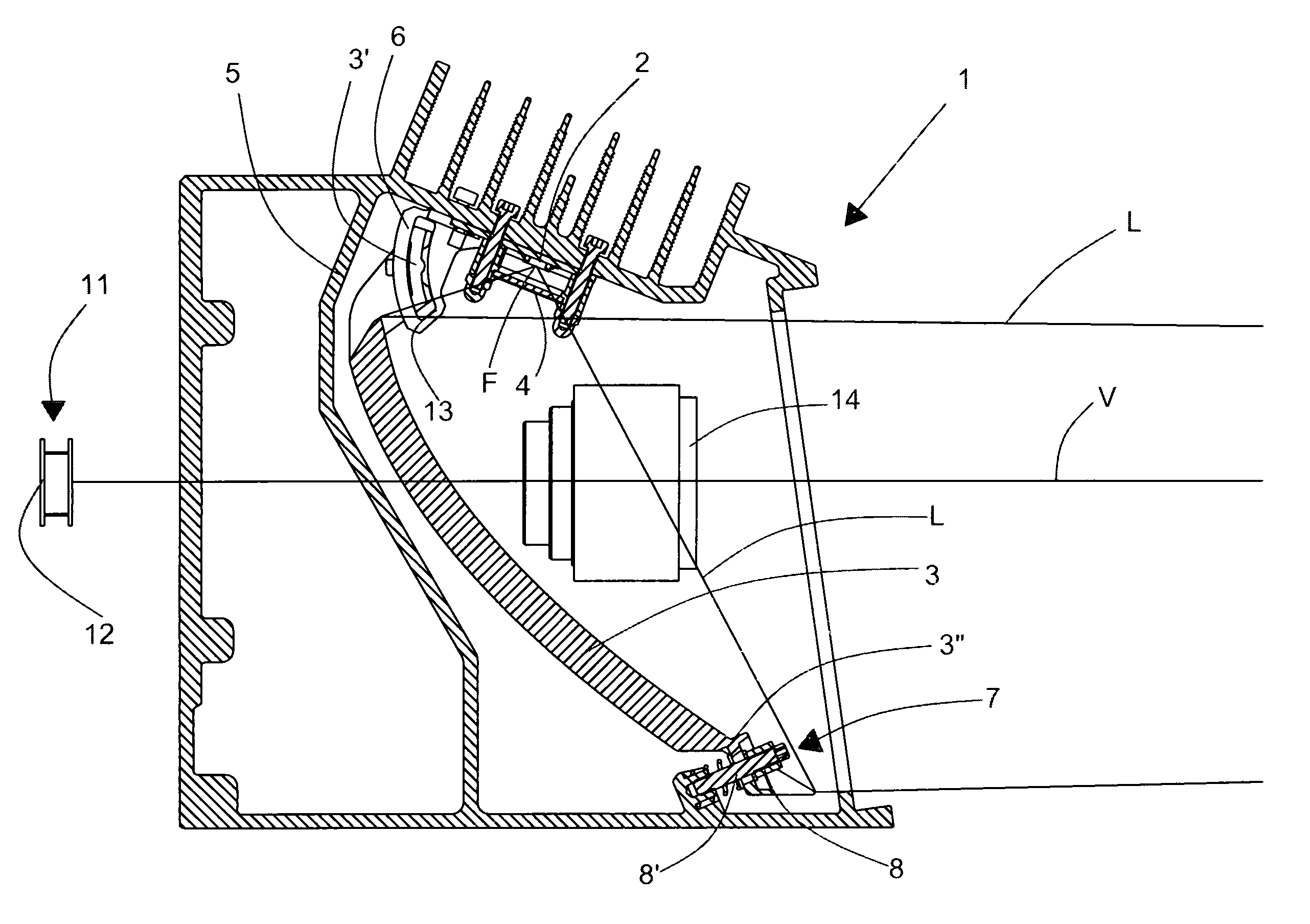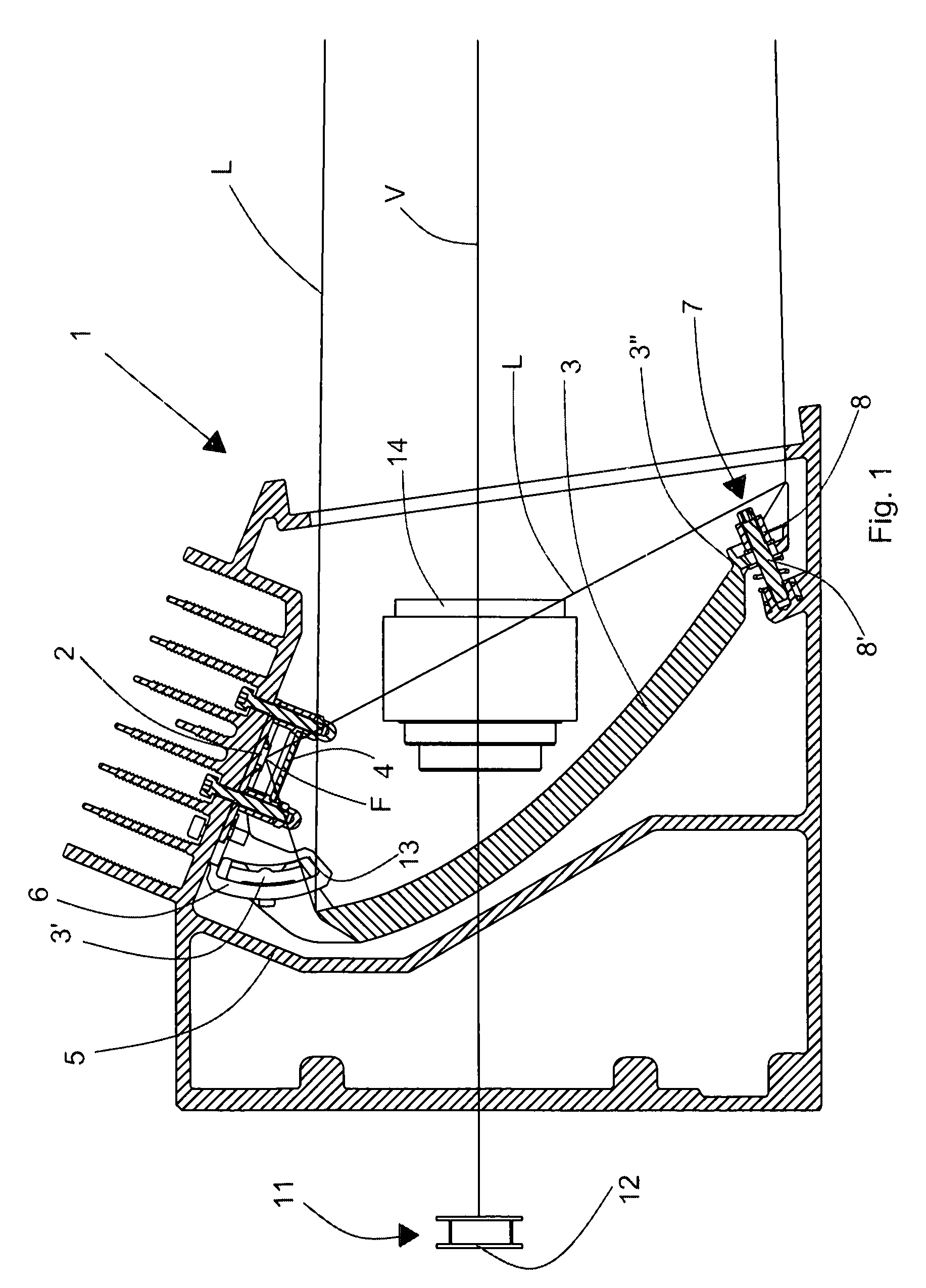System for automatically acquiring optically coded information, illuminator for said system and method for aligning with each other optical components of the system
a technology of automatic acquisition and optical encoded information, applied in the direction of instruments, lighting and heating equipment, sensors, etc., can solve the problems of reducing the efficiency of the system, wasting the majority of the light emitted, and reducing the exposure time, so as to maximise the light intensity of the image and optimize the alignment
- Summary
- Abstract
- Description
- Claims
- Application Information
AI Technical Summary
Benefits of technology
Problems solved by technology
Method used
Image
Examples
Embodiment Construction
[0030]With reference to FIG. 1 an illuminating device according to the invention comprises at least one illuminating element 1 provided with a linear light source 2 consisting, for example, of an array of solid-state emitters, for example high-power LEDs, and extending along a first direction, a reflecting optical element 3 that receives a light beam L emitted by the light source 2 and reflects it towards a reading zone where the light is intended to illuminate an optical code impressed on an object, that has to be read by an image-acquiring device 11, for example a television camera, or camera, that comprises an objective lens 14 that forms an image of the optical code and an optical sensor 12, for example a linear sensor, that is arranged at the image forming plane, or image plane, inside said image-acquiring device 11. The reflecting optical element 3 is shaped so as to have at least one first linear focus F in an area around which the light source 2 is arranged. Between the ligh...
PUM
 Login to View More
Login to View More Abstract
Description
Claims
Application Information
 Login to View More
Login to View More - R&D
- Intellectual Property
- Life Sciences
- Materials
- Tech Scout
- Unparalleled Data Quality
- Higher Quality Content
- 60% Fewer Hallucinations
Browse by: Latest US Patents, China's latest patents, Technical Efficacy Thesaurus, Application Domain, Technology Topic, Popular Technical Reports.
© 2025 PatSnap. All rights reserved.Legal|Privacy policy|Modern Slavery Act Transparency Statement|Sitemap|About US| Contact US: help@patsnap.com



